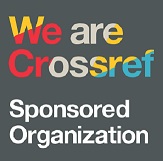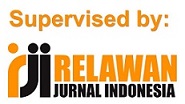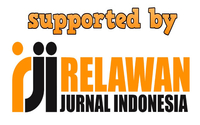IDIOMATIC EXPRESSION TRANSLATION STRATEGY IN RHONDA BYRNE’S BOOK THE MAGIC
Abstract
One of the problems in translation is idiom. Idiomatic expressions are unique because their structures cannot always be translated literally and even tend to form new meanings. This research aims to analyze the strategy of English idioms translation in Rhonda Byrne’s book The Magic which was translated into Indonesian entitled The Magic by Susi Purwoko and to find out the most dominant strategy used by translator. This research is a qualitative descriptive study. The data are English idioms and their translation in Indonesian. There are 48 data. Those are analyzed based on Baker’s Idiom translation strategies. They are (1) using an idiom of similar meaning and form, (2) using an idiom of similar meaning but dissimilar, (3) Translation by paraphrase. The result shows that there are three strategies of English idioms translation in Rhonda Byrne's book The Magic. They are (1) using an idiom of similar meaning and form (15 %), (2) using an idiom of similar meaning but dissimilar (31 %), (3) Translation by paraphrase (54); and the most dominant strategy is a translation by paraphrase.
Keywords
Full Text:
PDFReferences
Bell, R. T.-. (n.d.). (1991). Translation and Translating_ Theory and Practice. https://www.academia.edu/38460208/Translation_and_Translating_Theory_and_Practice.
Byrne, R. (2012a). The Magic, (86400), 16–19, 133,. https://febs.onlinelibrary.wiley.com/
doi/full/10.1002/1873-3468.13747.
Byrne, R. (2012b). The Magic (terjemahan). Jakarta: Gramedia Pustaka Utama.
Fitriyah, F., Emzir, E., & Ridwan, S. (2019). Cultural Values of Politeness in Efl Classroom: a Study of Etnography of Communication. Language Literacy: Journal of Linguistics, Literature, and Language Teaching, 3(2), 207–216. https://doi.org/10.30743/ll.v3i2.1965
Hartono, R. (2020). TRANSLATION The Essential Reference for Translators. https://www.researchgate.net/publication/337632508_Product_Label_Translation_in_Indonesia_Mistakes_Quality_and_Solutions.
Hatim, B., & Munday, J. (2004). Translation: An advanced resource book (Vol. 53). https://doi.org/10.1017/CBO9781107415324.004
Mona Baker. (1992). In Other Words A Coursebook on Translation. https://www.academia.edu/5675886/In_Other_Words_A_Coursebook_on_Translation_Mona_Baker.
Nababan, M. (2003). Teori Menerjemah Bahasa Inggris. Yogjakarta: Pustaka Pelajar.
Saragih, A. E. (2020). The Translation of Phrasal Verbs in Thirteen Reasons Why. Language Literacy: Journal of Linguistics, Literature, and Language Teaching, 4(1), 160–167. https://doi.org/10.30743/ll.v4i1.2307
Sutopo, H. . (n.d.). Metodologi Penelitian untuk Ilmu-ilmu Sosial dan Budaya. Surakarta: UNS Press.
Verity, D. P., & Larson, M. L. (1986). Meaning-Based Translation: A Guide to Cross-Language Equivalence. The Modern Language Journal, 70(1), 95. https://doi.org/10.2307/328112
DOI: https://doi.org/10.30743/ll.v4i2.3113
Refbacks
- There are currently no refbacks.
Fakultas Sastra
Universitas Islam Sumatera Utara (UISU), Medan
Jl. Sisingamangaraja Teladan Medan 20217
Telp. (061) 7869911, e-mail: language_literacy@sastra.uisu.ac.id









